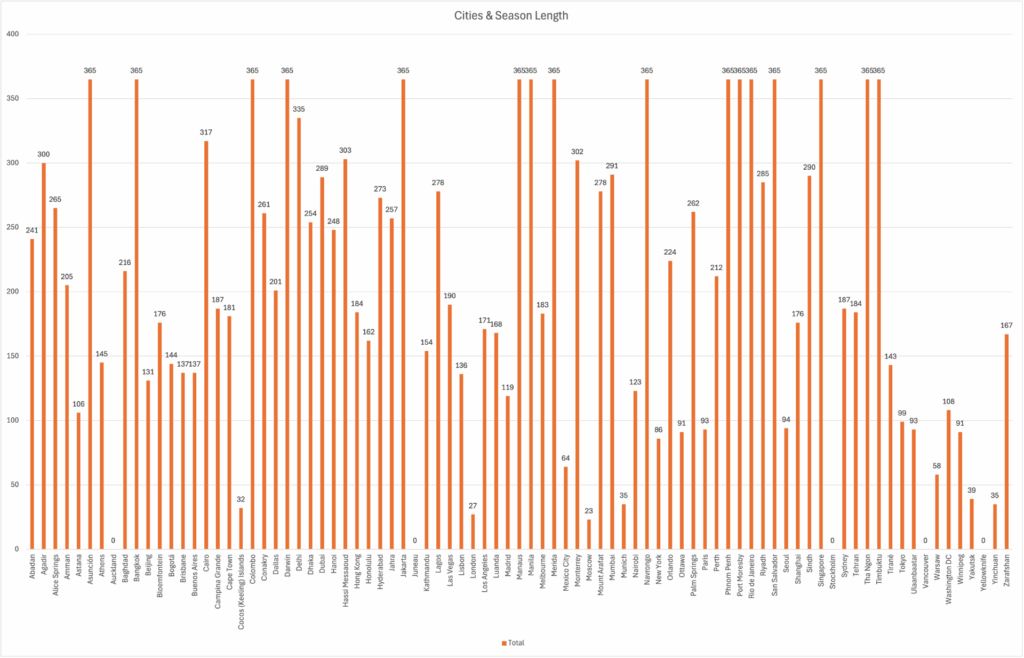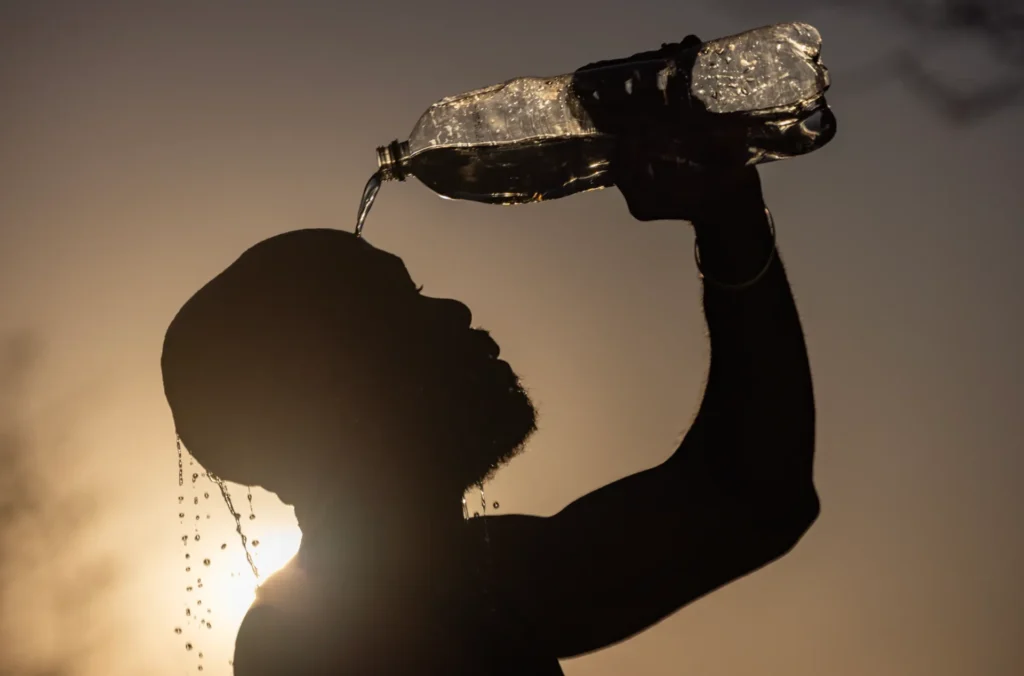A new global heat analysis has revealed that African cities are enduring some of the longest and most intense heat seasons in the world, with experts warning that current planning and public health responses are dangerously inadequate.
According to meteorological data collected from 85 cities across all climate zones between 2019 and 2023, heat seasons now stretch an average of 214 days per year.
In many African cities, the duration is significantly longer. The study, conducted by Climate Resilience for All (CRA), shows that extreme heat is no longer confined to traditional summer months.
Timbuktu in Mali and Navrongo in Ghana both recorded heat seasons lasting all year, with temperatures exceeding 32°C (90°F) from January through December. Cairo, Agadir, and Hassi Messaoud are close behind, with heat seasons spanning over 300 days annually. Even coastal cities like Lagos and Conakry are experiencing extended heat seasons lasting up to nine months.
Dr. Larry Kalkstein, who led the CRA team, explained that the analysis used meteorological data to identify the first and last days each year when temperatures hit or surpassed 32°C. “Our goal was to understand not just how hot it gets, but how long populations are exposed to potentially dangerous heat,” he said.
The findings expose a new layer of climate vulnerability in Africa, where many cities were never designed to withstand such sustained high temperatures. The phenomenon is compounded by rapid urbanisation, limited green space, and the urban heat island effect, which traps heat in densely built environments.

“Extreme heat is taking a growing and significant toll on people’s health,” said Kathy Baughman McLeod, CEO of Climate Resilience for All. “It causes illness and death, disrupts infrastructure, tourism, and productivity, and strains already fragile healthcare systems.”
With the threat now spanning most of the calendar year, health and planning experts are calling for a dramatic rethink of how African cities respond to heat.
“The idea that heat is just a normal part of summer is outdated and dangerous,” Baughman McLeod added. “Governments, businesses, and employers must manage the risks with urgency and precision.”
In Nairobi, where the heat season stretches across nine months, low-income residents are particularly vulnerable. Tin-roofed housing, poor ventilation, and lack of tree cover make already tough living conditions harder to survive during prolonged heat spells.
In Cairo, where heat peaks are increasingly occurring both early and late in the year, authorities have begun to experiment with rooftop greening and urban cooling corridors. But experts say such efforts need to scale faster.
Climate Resilience for All, a global NGO active in seven countries, is focusing on protecting women and vulnerable communities from heat. The organisation hopes that the data will help local governments, health departments, and city planners develop smarter warning systems and long-term strategies.
“This is not just about coping with the heat today,” said Dr. Kalkstein. “It’s about building cities that can survive the heat of tomorrow.”










